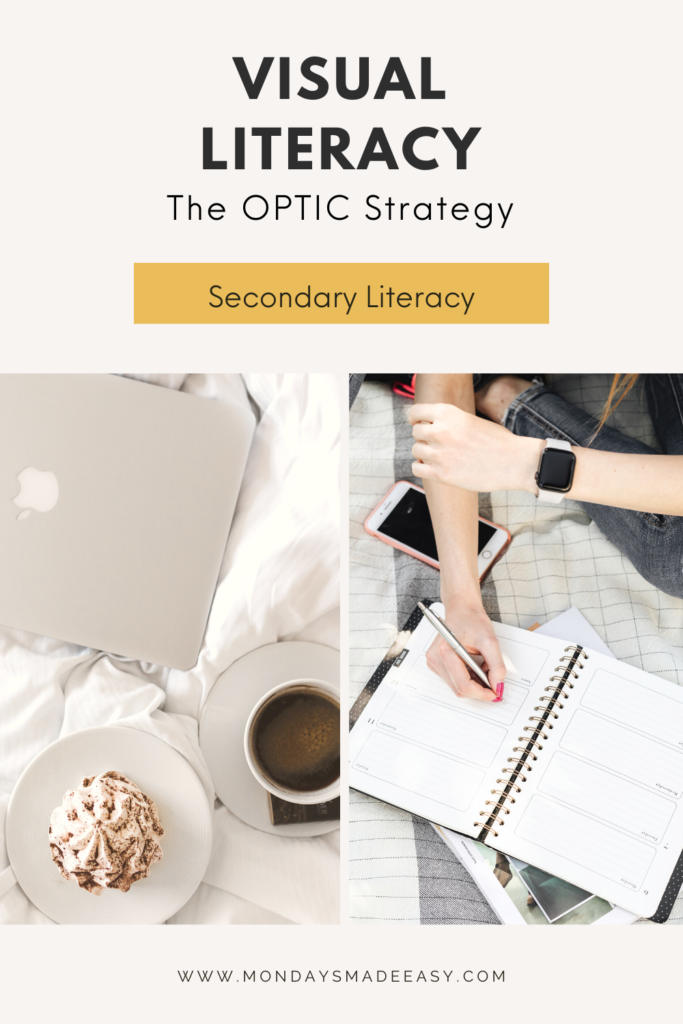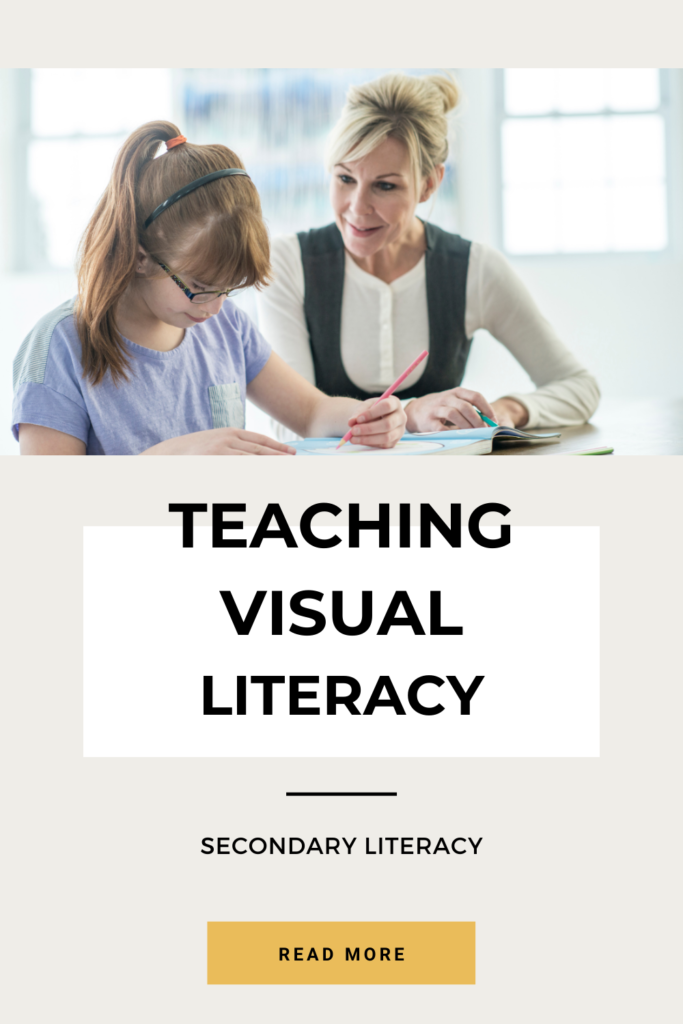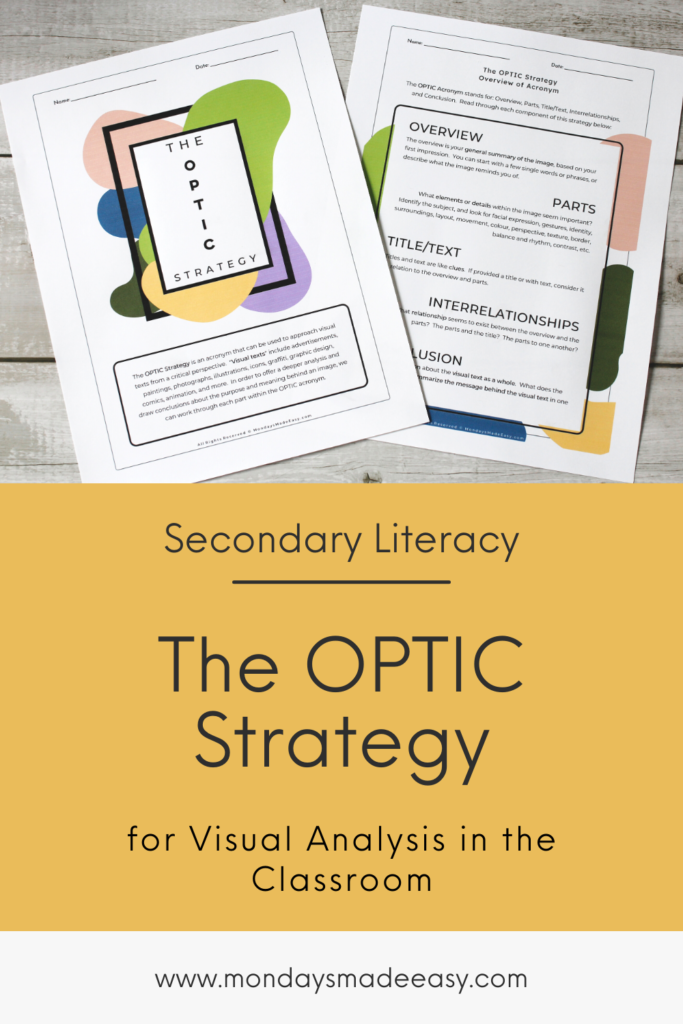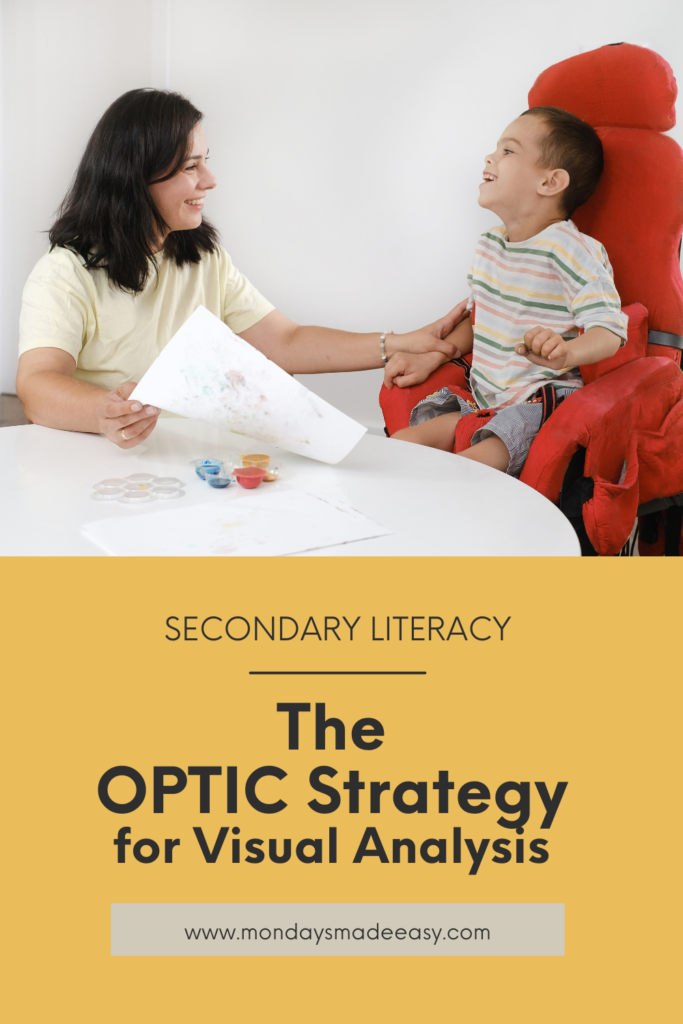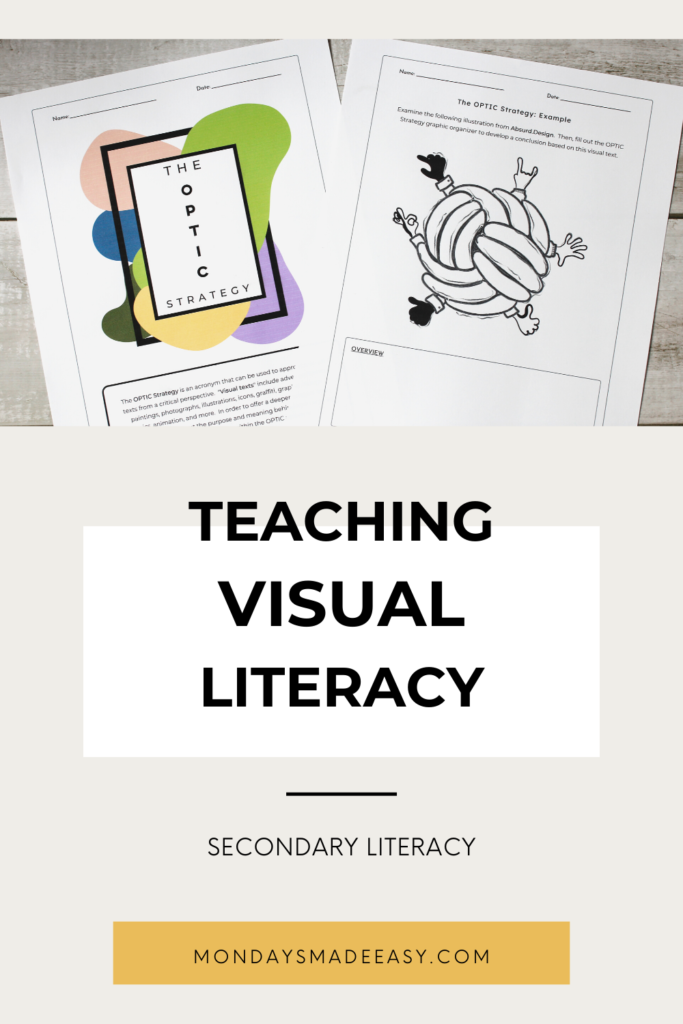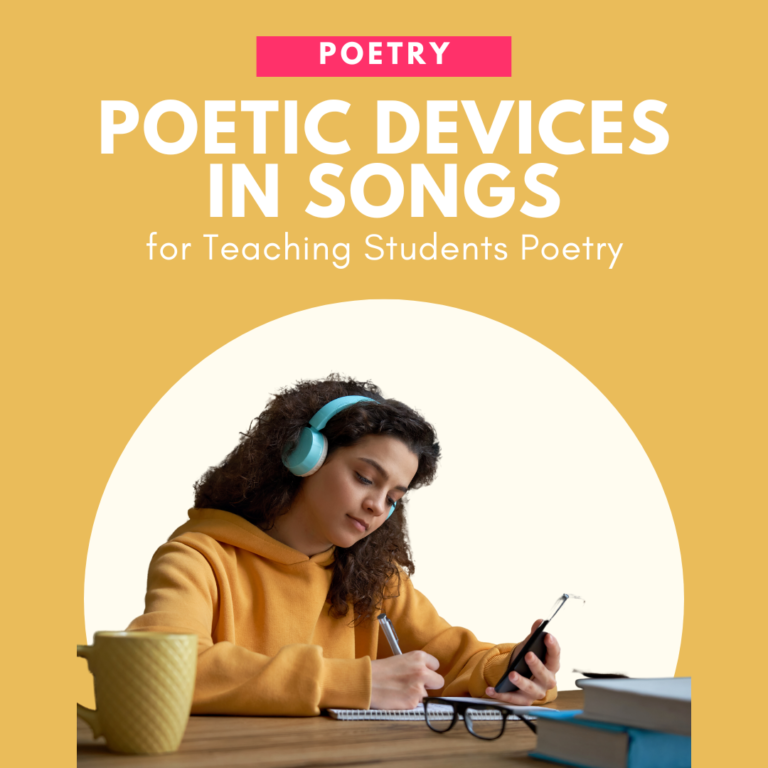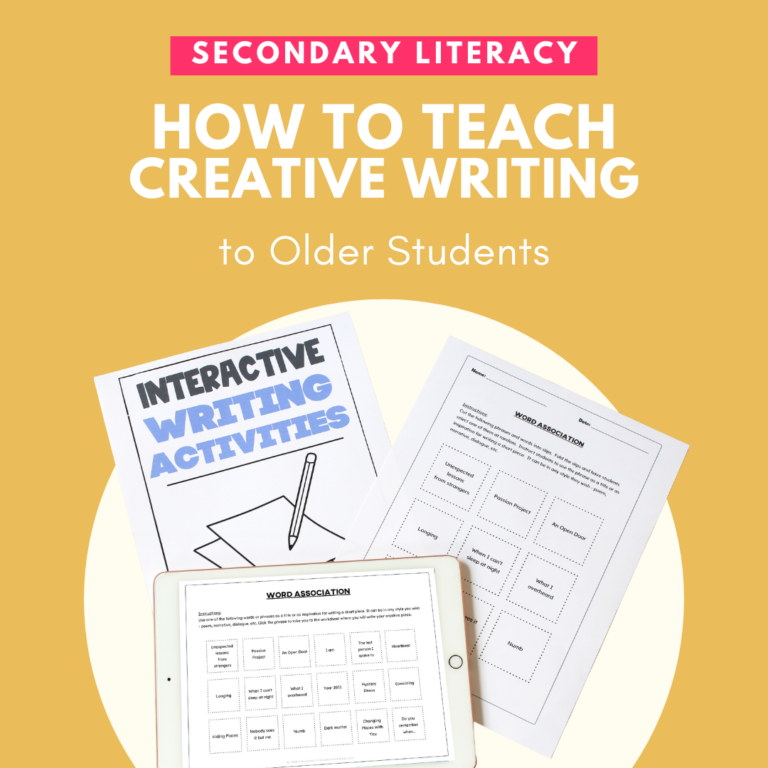Teaching visual literacy is a thought-provoking activity that will push students to think outside the box. Visual literacy is highly engaging for learners of all levels. This blog post will explore the OPTIC strategy and show you how you can teach students to analyze visual texts. The OPTIC strategy will support visual learners, English Language Learners, and AP Language and Composition students alike!
What is Visual Literacy?
Visual literacy refers to the ability to interpret, analyze, and create visual texts. Visual texts refer to any type of communication that relies on visual elements (images, graphics, or videos) to convey meaning or information. This form of literacy involves understanding the visual language, including elements such as color, line, shape, texture, and composition, and being able to use them to communicate ideas and messages effectively. It also means understanding the cultural and social contexts that shape images and learning to critically think about what they represent.
Why is Visual Literacy Important?
On my very first day in my very first classroom, I relied on a textbook lesson plan that analyzed Pablo Picasso’s painting, “The Girl on a Ball.” This lesson plan made me apprehensive. Not only did Picasso’s painting seem incredibly ambiguous but there was no guidance from a framework.
Admittedly, I was having a hard time interpreting this image myself. I wasn’t sure what conclusions my students could possibly draw. This was the last thing I wanted to imagine for my first day in the classroom.
I now realize that my apprehension was because I myself had never focussed on visual literacy during my own education. Strangely, It seemed that there was little acknowledgment of the fact that visual images are also texts.
It’s surprising that there is not more emphasis on visual literacy given that visual media is increasingly prevalent in our daily lives. In the digital age, students are engaging with visual media quite frequently; visual texts are highly engaging and communicate information swiftly.
What is the OPTIC Strategy?
The OPTIC strategy is an acronym for visual analysis. It can be used to approach any visual text. If you teach the AP Language and Composition course, you may already be familiar with the OPTIC strategy. This acronym is an essential component of approaching the synthesis essay prompt for the AP Language and Composition exam.
Thankfully, you can use this device in all of your language classes. The OPTIC strategy can be used to support lessons in art criticism, historical inquiry, business, graphic design, and many other areas of the curriculum.
What Does the Acronym OPTIC Stand for?
The OPTIC Strategy is a mnemonic device and represents the overview, parts, title and text, interrelationships, and conclusion of a visual text. This strategy establishes a framework that students can utilize to interpret any image. Here is an in-depth explanation of each step within this framework:
- Overview: The overview is the general summary of the image, based on the first impression. The student can start with a few single words or phrases to summarize the image.
- Parts: What elements or details within the image seem important? Students can identify the subject and look for facial expressions, gestures, identity, surroundings, layout, movement, colour, perspective, texture, border, balance and rhythm, contrast, and more.
- Title and Text: Titles and text are like clues. If provided with a title or text, students can consider it in relation to the overview and parts.
- Interrelationships: What relationship seems to exist between the overview and the parts? The parts and the title? The parts to one another?
- Conclusion: Students will then draw a conclusion about the visual text as a whole. What does the image mean? The conclusion will summarize the message behind the visual text, based on the preceding steps within the OPTIC strategy.
An Example of The Optic Strategy for Visual Literacy
To demonstrate this visual literacy technique, let’s apply the OPTIC strategy to “The Girl on the Ball” by Pablo Picasso.
An overview of this image would likely describe a girl balancing on a ball, with a man overlooking her performance.
Examining the parts, the audience may note any of the following:
- The outfits that the two subjects are wearing
- The expression on their faces
- The shape of the block that the man is sitting on
- The body language expressed by each subject
- The people and animals in the backdrop
- The neutral colors
- The dark shading
- The perspective and layout of the subjects
- The barren landscape
While this painting does not feature any text, the title provides an objective summary of the image.
The audience may note a number of characteristics when examining the interrelationships, including:
- The contrasting colors
- The polarity of the subjects’ body language
- The differences between the shapes on which these subjects are situated
- The dynamic of rigidity and fragility
Drawing Conclusions Using the OPTIC Strategy
While your students may have similar responses to the first four steps of the OPTIC Strategy, their conclusions will likely be open to more interpretation. Some of your students may comment on gender roles or analyze the image through a feminist lens. Others might associate the colors and shading with psychology and emotion.
Depending on their prior knowledge, some students might see the painting as a reflection of a historical era, or of specific cultural norms. Like many critical thinking exercises, it is not so much what your students say, but rather the evidence that they use to support their interpretation.
OPTIC Strategy Worksheets and Activities for Visual Literacy
Whether you teach English, History, Art, Business, Graphic Design, or Photography, you can use the OPTIC strategy in a number of ways to teach visual literacy. Here are a few suggestions:
- Media Literacy: Have students analyze advertisements in magazines or featured on billboards
- Visual Art: Utilize the OPTIC Strategy as an outline for students writing an explanatory paragraph about their classmates’ art pieces
- English: As a pre-reading activity, have students interpret book covers to make predictions about their upcoming novel study and engage in a student-led discussion.
- History: Interpret political imagery from a historical era, such as cartoons and propaganda
- Music: Have students analyze album artwork from a specific genre or from a specific artist
- Graphic Design: Compare illustrations and graphics used in different industries
- Creative Writing: Have students interpret graphic novels, or create and illustrate their own comic strips
If you’re looking for more tools to teach visual literacy, I have a free graphic organizer in my Free Resource Library. This resource includes an explanation of the OPTIC Strategy, along with an abstract illustration that can be used to model this process with your students. It also includes a blank graphic organizer that can be used to analyze any visual text.
For more worksheets and activities, check out this lesson plan.
Join the Free Resource Library to Download your FREE OPTIC Strategy Worksheets

